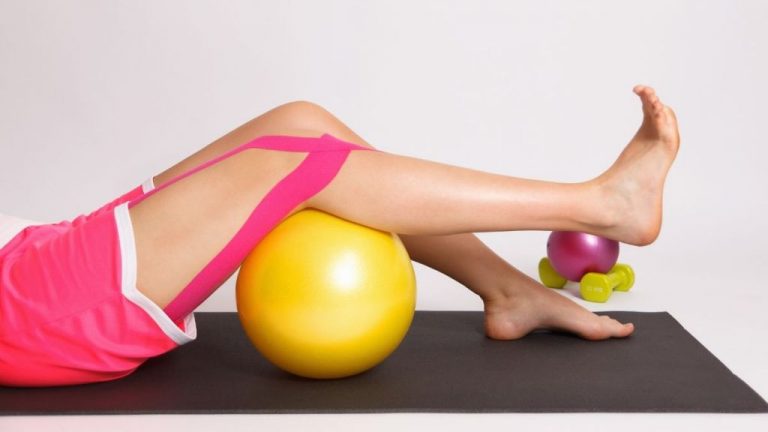Types of Stretches

Each individual’s wellbeing is profited from getting an adequate measure of activity every week. Expanding your actual wellness is staggeringly fundamental for living a better, really satisfying life. While we regularly consider explicit activities with regards to working out, like running, weightlifting, trekking, and comparative exercises, always remember the significance of extending. Many individuals contemplate extending to heat up or cool down after an activity, nonetheless, they don’t understand the number of various sorts of extending there are, and that a considerable lot of them have an alternate reason for our bodies. Understanding the contrasts between these adaptability procedures can assist you with finding which one best suits you. For the various kinds of stretches and when to do them, read underneath.
Static Stretching
Beginning with one of the most well-known instances of extending, static stretches work by stretching out your designated muscle gathering to its greatest point for as long as 30 seconds. The place of this stretch is to extricate up the muscles you have been working all through your time of activity. It will likewise assist with encouraging your scope of movement and increment your adaptability. Every day of activity should target or utilize a particular arrangement of muscles. After they have had a decent exercise, your muscles start to fix from the pressure they have persevered. Extending these muscles for a drawn out measure of time will diminish this pressure and keep lactic corrosive from developing further in them. This can make them be soarer in the days you’ll be recuperating from the exercise. Since these stretches are intended to calm the muscle of pressure, they are intended to be explicitly done at the finish of an exercise.
Dynamic Stretching
In contrast to static extending, dynamic extending isn’t intended to utilize holds for a drawn out timeframe. With these stretches, you ought to utilize examples of consistent developments that are equivalent to those you’ll use in your exercise. For instance, a swimmer is probably going to utilize round arm movements like their swimming strokes. You can do this with any sort of activity. Some other normal models are hips circles, thrust and bend, arm circles, arm swings, and spinal turns, just to give some examples. Since these are intended for heating up, dynamic stretches are done toward the start of your exercise. The stretches are intended to assist with relaxing your muscles before utilize and get your blood siphoning. This will assist with giving your body more force, at last working on your exhibition during an exercise. Dynamic extending additionally keeps your muscles adaptable which will keep you from harming yourself.
Ballistic Stretching
When finding out with regards to the various sorts of stretches and when to do them, ballistic extending can be somewhat confounding a direct result of its similitudes to dynamic extending. Ballistic extending is one more sort that is intended to be done before you start your exercise. The interaction utilizes quick and abrupt developments. This stretch is utilized regularly by competitors. One of its particular subtleties is the stretching out of the pieces of the body past their scope of movement. This leads many to think about how safe ballistic extending truly is. Actually, it very well may be perilous for the normal individual, particularly the people who need insight in sports. A few instances of its utilization are the way ballet dancers and b-ball players play out these stretches to build their adaptability which is accepted to expand the energy of bouncing. Because of certain examinations proposing ballistic stretches can debilitate the hamstrings and lead to other muscle wounds, they are not suggested for the normal individual. This extending technique is best rehearsed by those appropriately prepared by athletic mentors and subject matter experts.
Dynamic Isolated Stretching
This extraordinary type of extending was made by a kinesiologist to further develop adaptability, decrease torment, and further develop an individual’s activity execution without the dangers of injury. Dynamic Isolated Stretching (AIS) can be split into three sections. The first includes detaching the muscle you’re extending by utilizing one muscle to extend the other one. For example, to extend your quadriceps, you need to flex your hamstrings. For the subsequent part, you will flex, yet just for a period two seconds. The third step of the interaction is to play out this multiple times. Along these lines, the entire cycle is doing 10 shot redundant holds, as opposed to one long one like with static stretches. Each time you do these flexes, try to take in previously and breathe out during the stretch. This is the legitimate method of breathing, which siphons more oxygen through the body and expands your flow. These stretches are totally protected to do all alone whenever you’ve taken in the legitimate procedure.
Myofascial Release
While in fact a kind of stretch, myofascial discharge is utilized as a sort of active recuperation. The interaction is intended to ease and mitigate strain and snugness in the space known as a trigger point. Myofascial discharge is utilized over a wide space of muscle and tissue, with an advisor tracking down the trigger point. This is the reason the greater part of these medicines are just done during an expert back rub treatment meeting. It is for the most part utilized on individuals who experience the ill effects of myofascial torment disorder. The name is a specialized way of portraying muscle torment. It explicitly alludes to agony and irritation in the delicate tissues of the body. These are the connective tissues that cover our muscles. The treatment cycle includes an advisor tenderly kneading the myofascial to feel for any spaces that may be solid or tight. The back rub is performed through the use of manual, light strain. The cycle can be rehashed on the particular trigger point until the advisor can see they’ve delivered all the pressure.

